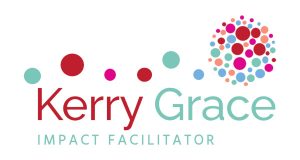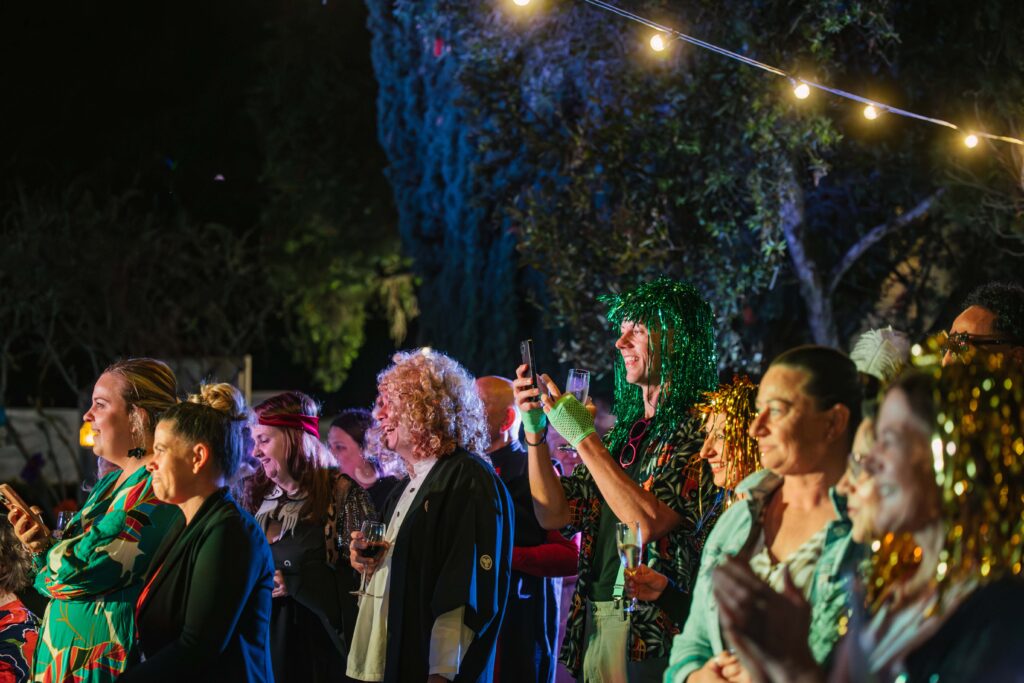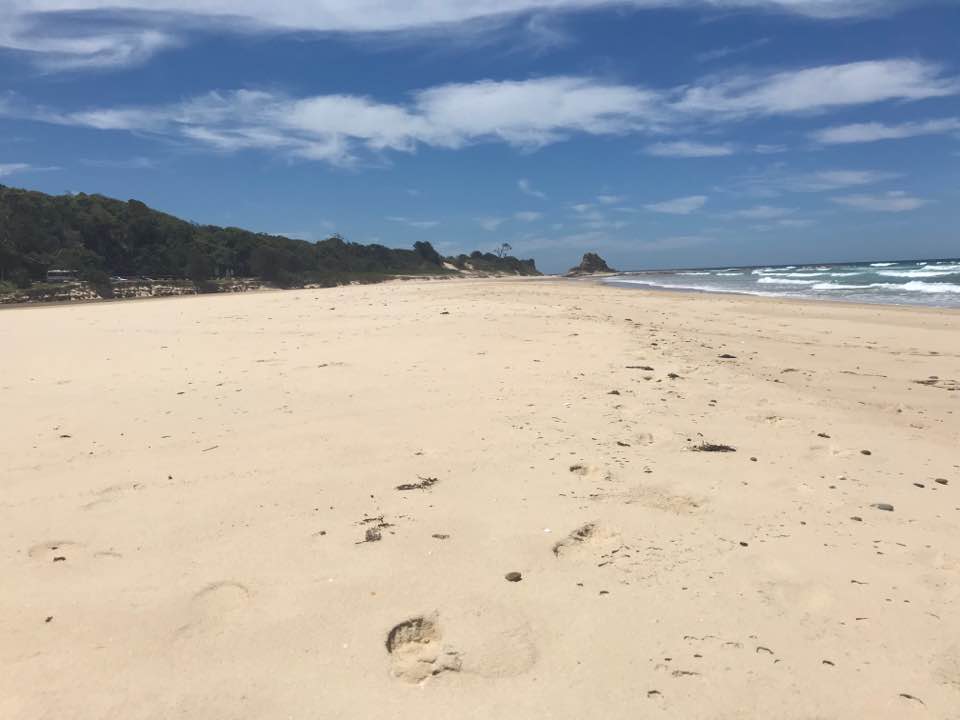Know that feeling when you find a model that describes your practice? I recently had this experience when I stumbled upon ‘Harmonic Principles’ designed by IA Interior Architects (shared below).
For some time now I’ve known my approach to designing events is not your bog standard practice – initially I thought it was just about good hosting however when I stumbled upon the practice of Neoroarts I found a new sense of excitement for what can otherwise be a thankless and grueling occupation (if you’ve ever arranged an event you know what I mean.)
In my new book, Spiralling Up I describe three steps to create sustainable change in a community. Those simple (yet complex) steps are:
- Come together
- Understand what matters
- Play with possibility
I don’t have formal qualifications in event management however, over 32 years of arranging hundreds of events spanning conferences to festivals, jam nights to dance parties I know that when people come together opportunities exist that span beyond getting a thing done, sharing a message or ticking a box.
These opportunities are found beyond the program, the key notes, the features. They are found in encouraging and nurturing connection.
When we have the opportunity to connect we have the opportunity to create deep and sustainable change.
I once described my approach to event management as community engagement over function – engaging over boring – ‘creative’ even. But really, those words diminish an intentional and cultivated practice that I know makes more out of coming together. It makes change that ripples through communities. It creates connection.
People talk a lot about wanting to create change, or (more likely) wanting to solve a problem. But in all the talking we miss the everyday opportunities that are right there. The opportunities to come together and connect.
That’s why we really need to have broader conversations about the business of connecting, the idea of coming together with and on purpose, the need to create events that have deeper purpose and above all enable people to connect. Why?
Because when people are connected, change happens.
Each year for the past three years I’ve produced and delivered a national conference that I founded in 2023 called Social Impact in the Regions (SIITR). I built on what I learned through producing Ignite MNC over five years in my role as CEO of Regional Development Australia Mid North Coast.
When the idea to create this national event for regional changemakers emerged I knew it was always more than a business opportunity. My intention was and still is – to create a platform for sustainable systemic change in regional communities. I wanted to provide a platform for people who are making and investing in change in regional communities to come together, to share, learn, grow and (perhaps even more importantly) to catch their breath. (you can read the founder story here).
Social Impact in the Regions (SIITR) will run in Grafton, NSW 3-5 September.
People who have attended Social Impact in the Regions say things like “there is no other event like this“, “it’s not your usual conference“. What I didn’t know was the framework through which my gut told me was simply good hosting. Last year I started learning about the practice of neuro arts and how that influences change in the context of events and more recently I stumbled upon a very exciting framework called ‘Harmonic Principles’ developed by IA Interior Architects Strategy Director, Valerie Jardon.
As I nerd out on this framework, I’ll demonstrate how SIITR is designed around these principles to enable deeper connection. The nine Harmonic Principles and live examples from SIITR are:
- Salient features – design for satisfaction
SIITR is an experience. We don’t just stick speakers on a stage and rely on them to carry the whole experience. There are surprises to uncover, creative elements, opportunities to unpack ideas, movement, a range of ways to learn. We encourage curiosity and audience engagement.
2. Sensory richness – design for vibrancy
When designing SIITR we consider all senses. In 2024 we partnered with the fabulous Aunty Deb Munson who ensured her healing aromatherapy products were wafting through the conference centre throughout the event. We source local people to create a range of props to support the theming of our event. We showcase all kinds of artists throughout the event. We don’t aim for polished and perfect, we aim for creative and immersive.
3. Sustainable realisation – design for reflection
At SIITR we encourage outdoor experiences, linking people with both the built and natural environment. While there is some sitting involved we mix it up with opportunities to move, to reflect, to get involved in creative experiences.
4. Collective growth – design for fulfilment
Our speakers are carefully chosen for their ability to present relatable messages to the audience that can be directly applied in their regional communities. We want people to walk away knowing how they can adapt what they have learned to their own community. We mix up the learning modalities to appeal to different learning styles presenting plenary sessions, lots of networking opportunities, living books, workshops and impact labs.
5. Absolute inclusion – design for attachment
Our program is designed to be inclusive. Over time we are creating a culture among our alumni that is collaborative, collective and nurturing. We provide space for debate and back this up with our annual white paper which sums up our year’s work in the regions and provides an advocacy platform for regional changemakers.
6. Authentic purpose – design for meaning
The SIITR audience genuinely wants to create and invest in sustainable change in regional communities. We keep the audience small on purpose so that those incidental opportunities to connect happen. Where else can a practitioner sit shoulder to shoulder with an investor or policy maker? Where else is the potential power imbalance of such connection ironed out by one clear goal – to create sustainable change in the regions.
7. Positive affordances – design for encouragement
Our event (particularly the conference dinner) incorporates many creative elements which are designed to provide talking points, ways for more introverted audience members to connect and curiosities’ to stimulate new trains of thought.
8. Bespoke flexibility – design for competence
In 2025 we are experimenting with a new conceptual framework for SIITR. Our conference program has been designed as a ‘choose your own adventure’ book inviting the delegates to indulge in a learning framework that suits their learning goals (or mood) each conference day. The guide gently guides delegates through a curated experience which will influence what they see and learn as well as what they attend on a given day.
9. Equitable beauty – design for wellbeing
SIITR isn’t held in traditional conferencing venues. We see a great deal of beauty in small regional communities and host our activities in the most unusual venues. Little details matter and we always work with a range of local creative industries practitioners to present professional and beautiful backdrops to the rich learning experiences presented by the event.
We incorporate a range of locally influenced wellness experiences from incorporating local practitioners to sourcing locally produced food.
I wonder if there are any of these elements that you might consider incorporating into your next event? I’ll be sure to provide some reflections on our articulation of this framework in 2025. Not many sleeps to go now – have you got your tickets? www.socialimpactintheregions.com.au



